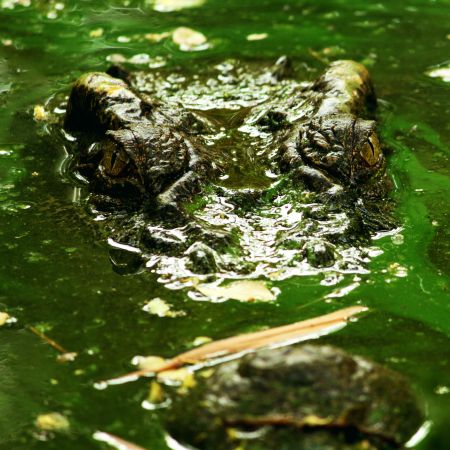- Home
- Adopt Reptile
- Reptile Crocodile
CROCODILES

GHARIAL(Gavialis gangeticus)
The gharial is found in the rivers of the Brahmaputra (Bhutan & India), the Ganges (India & Nepal),and the Mahanadi (India). They are adapted to an aquatic lifestyle in the calmer areas of deep, fast-moving rivers. Gharial have a narrowly elongated snout. The adult male has a bulbous growth on the tip of its snout called a "ghara" which means “pot” in Hindi. They feed almost exclusively on fish. Our gharial group of 11, get along harmoniously and are proud parents of many clutches of hatchlings which we have incubated right here at the Croc Bank.
AMERICAN ALLIGATOR(Alligator mississippiensis)
The word "Alligator" is derived from the Spanish words "el lagarto" which means "the lizard". Alligators are found in only two countries in the world- the USA and China. Adult alligators can survive near freezing conditions. They submerge their body but keep their nostrils projecting above the water surface, so that when the surface freezes they can still breathe. Alligators favour marshy freshwater habitats. We have two individuals, Barney and Nicole, up for adoption.
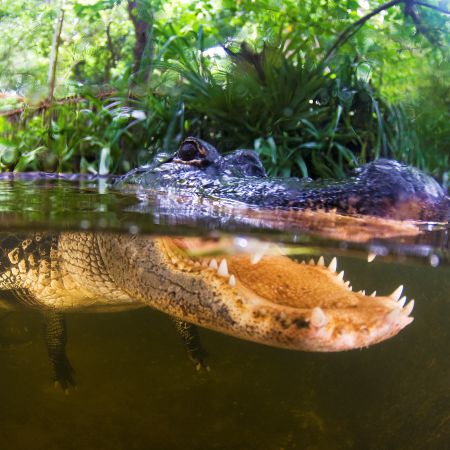
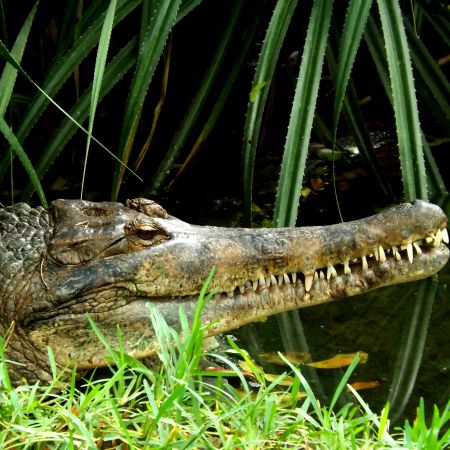
TOMISTOMA(Tomistoma schlegelii)
The Tomistoma is also sometimes called the False Gharial because of the resemblance of its snout to that of the Gharial. Psycho is our 30-year-old male and Godzilla is our 45-year-old female, who came to us from Ahmedabad (Don’t ask who named them). In the wild, they are found in freshwater streams and lakes of Indonesia, Malaysia and Vietnam. They are still a very poorly studied species. There have been several clutches of eggs, and we hope it’s just a matter of time that we get "viable" (with babies within) eggs!
BLACK CAIMAN(Melanosuchus niger)
The Black Caiman was once, like several crocodilians, pushed to near extinction for skins. They have now recovered to numbers similar to those in the past, and are facing new problems: humans! Melanie is a female black caiman, but through our zoo exchange program, we hope to get a companion for her soon!

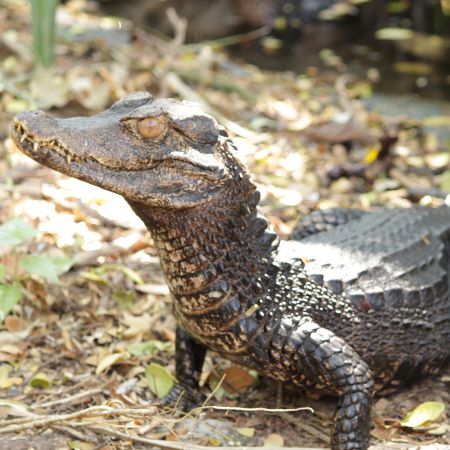
CUVIER’S DWARF CAIMAN(Paleosuchus palpebrosus)
The world’s smallest crocodilian, found in Central and South America in Bolivia, Brazil, Colombia, Paraguay, Peru, Venezuela. Mainly inhabits forested freshwater rivers and flooded forests around larger lakes. In captivity at the Croc Bank, both females and our male vigorously defend nests; also a maximum of three females are known to have shared a mound nest in one year. At the Croc Bank, we have eight adults and one baby (Pablo), up for adoption.
GHARFIELD(Gavialis gangeticus)
Hatched in 1991, Gharfield is one of the first gharials to hatch in captivity in the world. He is an adult male and gets along fine with the red-crowned roof turtles in his enclosure. Nowhere else in India can you see a gentle giant like him underwater. Did you know, that gharial is the only species of the 23 crocodilians which can have its gender easily identified by an external characteristic? The "ghara" or the bulbous growth at the end of the snout is only seen in gharial males.
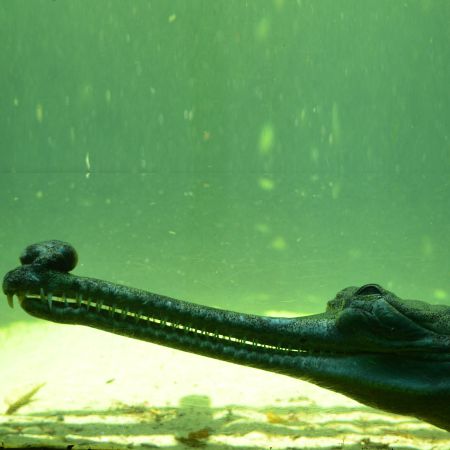
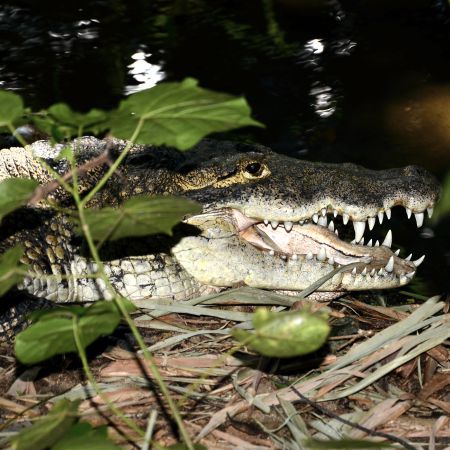
MORELET’S CROCODILE(Crocodylus moreletii)
Found in Belize, Guatemala and Mexico. Parental care of this species has been well documented in captivity. Juveniles consume small invertebrates in and around the water, as well as vertebrates (generally small fish). There have been instances of this species attacking people. However, do not fret, they do not attack foster parents!
MUGGER OR MARSH CROCODILE(Crocodylus palustris)
Most commonly found crocodilian in India, Sri Lanka, Bangladesh, Iran, Nepal and Pakistan. Generally inhabits freshwater rivers, lakes and marshy swamps. This species, like many other crocodilians, is known to dig burrows. The mugger’s snout is the broadest of the Crocodylus genus, giving the mugger a more alligator-like appearance.
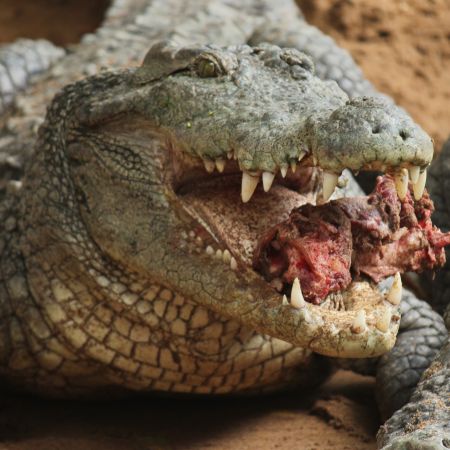
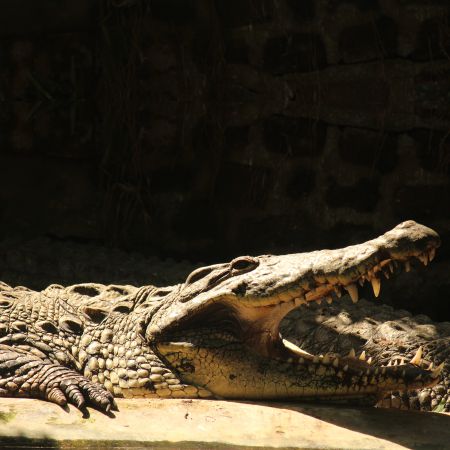
NILE CROCODILE (Crocodylus niloticus)
They are one of the most aggressive crocs found on the planet. Nile crocs have a wide distribution and habitat preference including lakes, rivers, freshwater swamps and brackish water. We have three individuals up for adoption, patiently waiting for the foster parents.
SALTWATER CROCODILE(Crocodylus porosus)
The largest species of reptile found in the world, which can grow up to 7m and weigh 1500 kgs. These crocodiles can be found in the Indo-Pacific region. We have four individuals waiting for a foster parent. They range between 3 - 4m, and are the first saltwater crocodiles to be hatched in captivity in India! In India, this species is found in Odisha, West Bengal, and the Bay Islands. Unfortunately, because they grow BIG, they sometimes also consider people prey, which has given them a bad reputation.
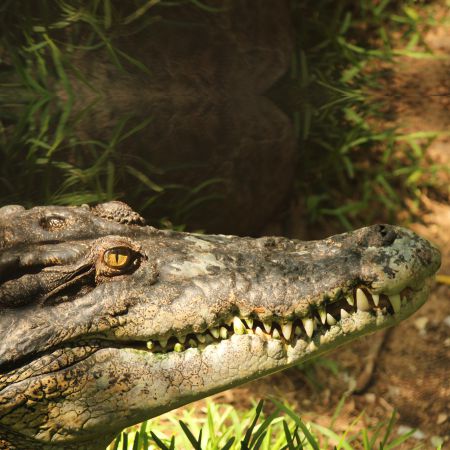
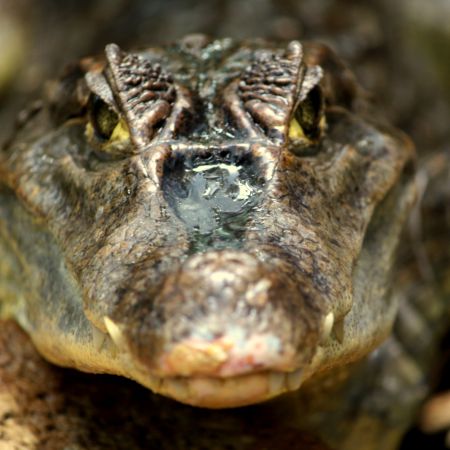
SPECTACLED CAIMAN(Caiman crocodilus)
Seriously, look at the face, doesn’t it remind you of a person with glasses? Our little group here has come from Central America, and they are now perhaps the most abundant of the six caiman species. Like the Yacare caiman, they are known to congregate in huge groups in the dry season in small ponds.
YACARE CAIMAN(Caiman yacare)
Due to their quick attainment of maturity and their ability to live in varied habitats, Yacare caiman are unique. Hunting has not affected them. They make mound nests like other caimans, and at least in captivity guard them against humans. Our male has to grow up, literally! He is almost half the size of our two females, no Valentines Day cards for him yet!

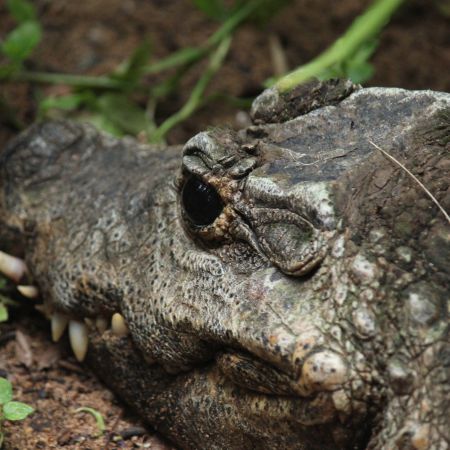
WEST AFRICAN DWARF CROCODILE(Osteolaemus tetraspis)
A tough croc to spot in the wild, partially due to its habitat, which includes small pools in rainforests across West Africa. Caught for the bushmeat trade, along with other animals like turtles, gorillas, and small mammals. Females lay eggs before the heavy rains in April - May. Inhabit burrows alongside water bodies they occupy and are known for long distance overland travel. Our single male, Jumbo, is a small (so yes, dwarf croc), and friendly crocodile, and we hope to get a female companion for him soon!
SIAMESE CROCODILE(Crocodylus siamensis)
One of the world’s most endangered crocodiles. The historical range included most of South Asia, but the current distribution is fragmented and wild. Extant populations are in Cambodia, Indonesia, Lao PDR, Thailand and Vietnam where native populations are possibly extirpated. They are "Critically Endangered" according to the IUCN Red List. At present, human disturbance and habitat fragmentation are the major threats faced by these crocodiles. Our pair has been breeding since 1991. With our close ties to the wildlife department in Cambodia, we hope to send a batch of babies back to the wild!
